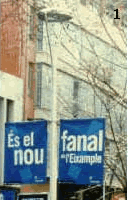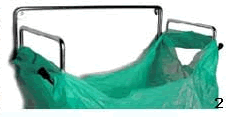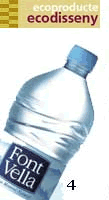03 Abr Spain knows how to eco design: ecoproducte/ecodisseny
Por Petz Scholtus
Treehugger.com
Things are happening here in Spain or rather Catalonia! Leonora and I went along to the Museu de les Arts Decoratives for the book launch of ?ecoproducte/ecodisseny?. Yes it was all in Catalan (and Spanish) and like the Spanish book ?diseño ecológico? it?s not translated into English (yet?).
Therefore we?d like to present to you the four designers that were at a round table discussion on eco design yesterday and whose products are also featured in the book.
Eulàlia Sandoval is the designer of the Fannal Eixample (2000), a streetlight designed for the area called ?Eixample? of Barcelona. The product is well thought through, tackling problems like light pollution and the need for heavy maintenance (no painting etc. needed). Solutions to avoid posters and stickers being attached to the light by adding a rough texture were also found as well as making this street light more energy efficiency, giving it a longer life (min. 50 years) and making it 100% recyclable (aluminium): Fanal Eixample

The second designer, Ernest Perera Duran presented his bin Come Bag Again (1999). It consists of a metal structure (one folded piece) to fix to the wall and attach plastic bags to it. This demonstrates minimum use of materials, reuses shopping bags and avoids more plastic bags (bin liners) being bought. It also saves you a lot of space and enables you to put several up for separating waste. Available from: Amor de Madre

Number three at the round table was Ramón Benedito, who worked for a company producing sinks and was fed up of seeing many perfectly intact sinks being thrown out just because their owner fancied a different design. This gave him the idea for the lavabo mural Kalahari (2001), which is a sink made from one piece of ceramic, dramatically reducing the use of material. Available at: Roca

Last but not least was Josep M. Morera, graphic but also industrial designer who worked on the redesign of the Font Vella plastic water bottle in 1998. The change consisted of using less material, switching from PVC to PET in order to make the bottle recyclable as well as making the label from PET to recycle it with the bottle. One of the most typical example of how a small change (in material reduction; 2 gr./bottle) can have a big impact.

These are the four products in a nut shell but looking through the catalogue I found more exciting projects such as the slippers Emilianas, the Nagore Spanish sandals or La Mediterranea recycled glassware as well as extensive information on eco labelling, eco design in general and in Spain, and an analyses of 127 eco products from crafts to mechanisms such as taps and fridges, raw material such as paint or wood varnish and industrial design products from lighting to packaging.
A very informative book on everyday objects actually easily available to make your environment greener. For those of you visiting Barcelona, the Museu de les Arts Decoratives dedicated part of their permanent design collection to eco design. Some of these pioneer examples also feature in the book ?ecoproducte/ecodisseny? so let?s hope the designers in Catalonia come up with more eco designs in the years to follow.
ecoproducte/ecodisseny: Editors: Ajuntamiento de Barcelona, Museu de les Arts Decoratives & Departament d?Imatge i Producció Editorial. Project managers: Marta Montmany & Joan Rieradevall. ISBN: 84-7609-166-4, and yes! It?s printed on 100% recycled paper. The book is available for ?12 in museums and bookshops in and around Barcelona.
Treehugger.com



Sorry, the comment form is closed at this time.